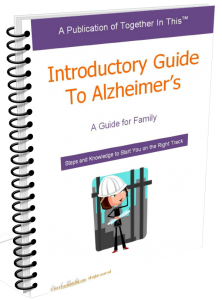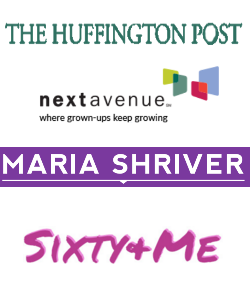The Alzheimer’s Podcast:
An Opportunity to Improve Dementia Care and Enrich Lives
Hello, and welcome to episode 13 of The Alzheimer’s Podcast.
I’m Mike Good of Together in This.
Thank you for joining me today to listen to this podcast where my goal is always to empower you to maintain a positive experience, reduce and eliminate the need for medications, & make your time together with those you care for, the best it can be.
The podcast is no longer being produced or hosted on podcast platforms. But you can listen to or download the episode by clicking the text below:
Click this text to open a new window where you can play the audio or click the 3 dots to Download
Prefer Video? Watch Here:
Show Notes:
If you’re not a techy then today’s episode may be boring for you, but I do think it will help everyone see there are technology solutions that can help make the dementia journey that much better.
I’ll be discussing assistive technology with more of a focus on high-tech, and how this technology can help the Alzheimer’s care partners. Simply put, assistive technology is anything that makes completing a task simpler and safer for people with unique needs.
Reading glasses, a lazy susan, a self driving car are examples of assistive technology.
Most of you probably don’t know but I’m and electronics engineer by degree and I spent about 20 years in the hi-tech industry. I’ve been a designer and a leader of teams developing products and solutions.
I’ve done a lot of research on how technology can help families living with Alzheimer’s. And frankly, assistive, cutting-edge technology geared for the Alzheimer’s care partnership is scarce.
What I’ve seen is that it’s much easier for manufacturer’s to sell an inferior product to teenagers and millennials who will work through the bugs than it is to sell a superior product that enriches the lives of people with special needs.
Technology it’s going to fix things, but if designed properly, technology can help ease the pains of family caregiving while helping the care recipient remain safe, independent, and enriched.
I cover a lot, but don’t worry if you miss something, because you will find a link below to the articles this podcast is derived from.
I’ve identified four categories that I’m going to discuss, and they are:
1) Caregiver peace-of-mind,
2) Caregiver empowerment
3) Patient assistance, and
4) Patient enrichment
Caregiver peace of mind is about ensuring that the person with Alzheimer’s is safe, happy, and well at all times.
Empowering the caregiver is accomplished by providing the tools and resources to make them stronger and more confident in managing their unique situation.
Using high-tech to empower the person with Alzheimer’s is about helping them remain confident and independent in their abilities throughout their day.
The final category is patient enrichment, and unfortunately, it has the least technological advancements.
To enrich, the technology must create purpose and help the individual feel successful while putting a smile on their face by lifting their spirit.
But, no matter how good the technology, there will always be a need for the caregiver to help at some point and personal interaction will always be the best enrichment of all.
- TinT Article: What is Assistive Technology for Alzheimer’s?
- Cameras
- Trackers
- Clocks
- Electronic Reminders
- Retro Music Players
- Sensors and Alarms
- Stimulation and Enrichment
Please feel free to ask questions or leave a comment below:





Thank you for taking the time to do these podcasts! I recently saw an item on one of my customers at the drug store. It was a luggage tag from shutterfly. You can put the alzheimers patients contact info and caregivers pictures on it and they can have it like an ID That way if they are lost someone can help them find home. It would be for emergency. They should have it in a fanny pack or something. My Mom doesn’t carry a purse anymore.
You are welcome, and I appreciate you sharing this suggestion. It reminds me of https://ifineedhelp.org/ – they create a unique QR code for the individual. They sell shirts, patches, all kinds of things with the code on it. Someone simply scans the code with their smart phone to get all the needed information to help the lost individual. – Mike